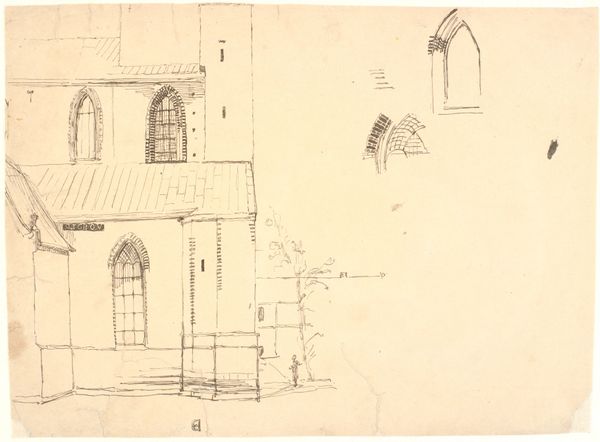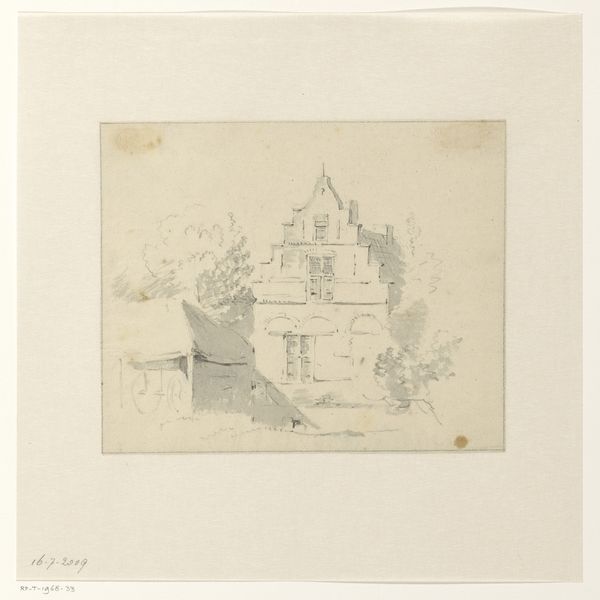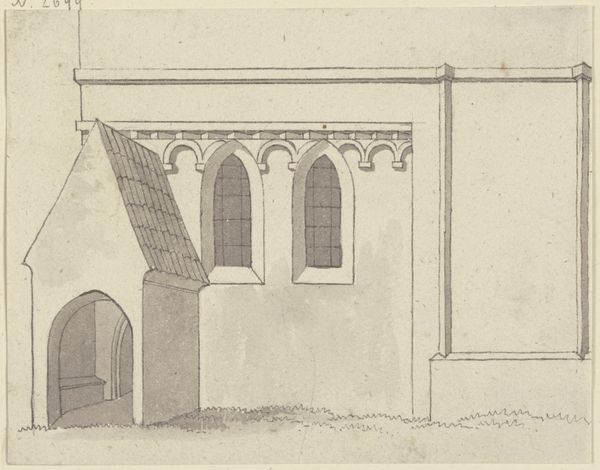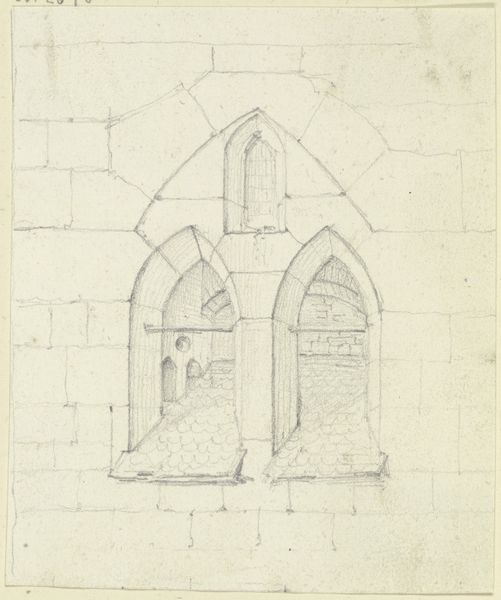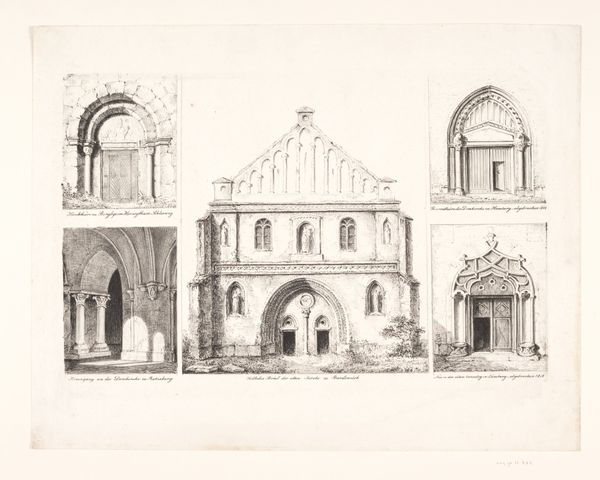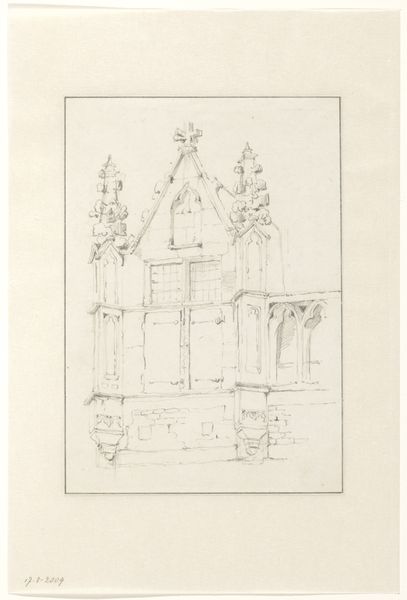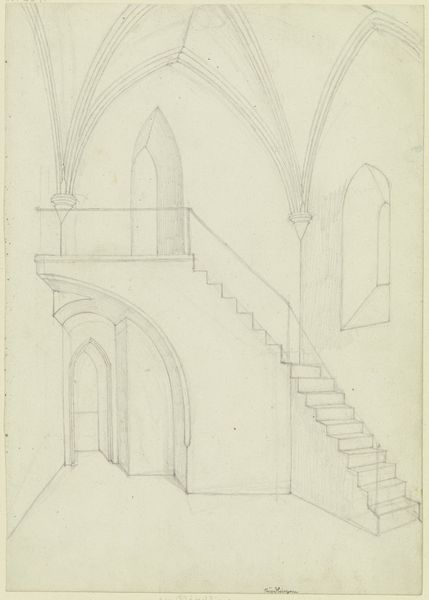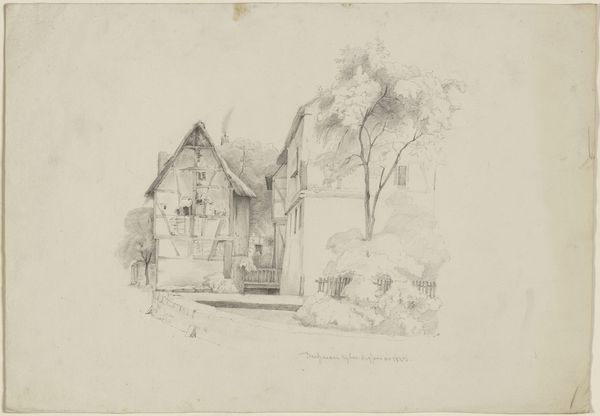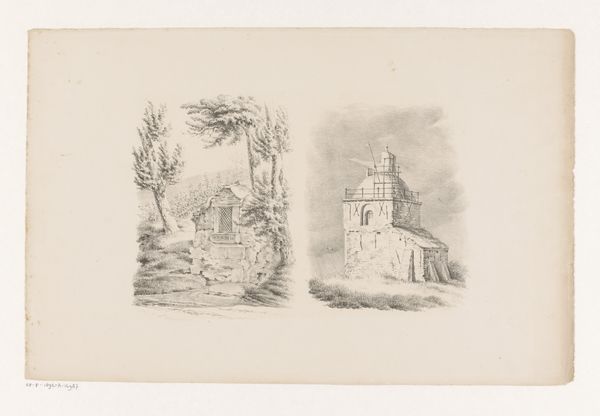
Dimensions: height 296 mm, width 416 mm
Copyright: Rijks Museum: Open Domain
Editor: So, this is Jan Striening’s “Twee dakkapellen te Nürnberg,” or “Two Dormers in Nuremberg,” done between 1837 and 1903 using pencil and watercolor. It’s a pretty straightforward rendering of these architectural details, but I’m curious about what might elevate them to something more meaningful than just a technical sketch. How do you interpret this work? Curator: What strikes me is the gaze the artist directs towards these dormers. In the 19th century, architecture was often seen as a symbol of power, reflecting social hierarchies and the burgeoning industrial revolution. Striening’s delicate rendering, however, presents a more intimate perspective, almost as if humanizing the structures. Consider, for example, how the careful detailing invites us to question the values and ideologies embedded within these urban landscapes. Editor: That's a fascinating take! I hadn't considered the implied power dynamics. The detail definitely suggests an engagement beyond simple documentation. Do you think he’s making a statement about the changing role of architecture? Curator: Perhaps. We can look at Romanticism as a philosophical movement that began as a reaction against the values of the Enlightenment, when the creation of artwork shifted toward subjective emotional experience over objective experience. As such, these dormers could reflect that kind of experience. Maybe he's encouraging us to consider the intimate lives lived within these spaces, resisting a purely functional or industrial interpretation. Think about the people who looked out from these dormers - what were their lives like? Editor: So it’s like a glimpse into a very specific domestic world. I’m beginning to see these dormers less as just parts of buildings and more as portals. Curator: Exactly! By centering our focus on structures usually at the top of our eyeline, perhaps it encourages a reevaluation of how we relate to the urban spaces we inhabit, a critical lens to understand and engage with the everyday realities around us. Editor: This was a fresh perspective on something that seemed simply representational at first. Curator: And hopefully a starting point for considering the narratives embedded within every brick and window of our shared environment!
Comments
No comments
Be the first to comment and join the conversation on the ultimate creative platform.
